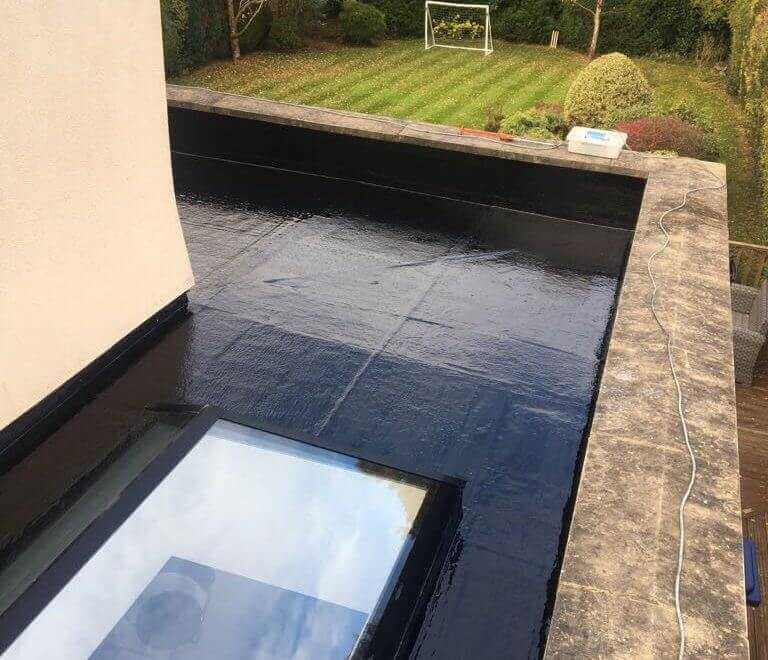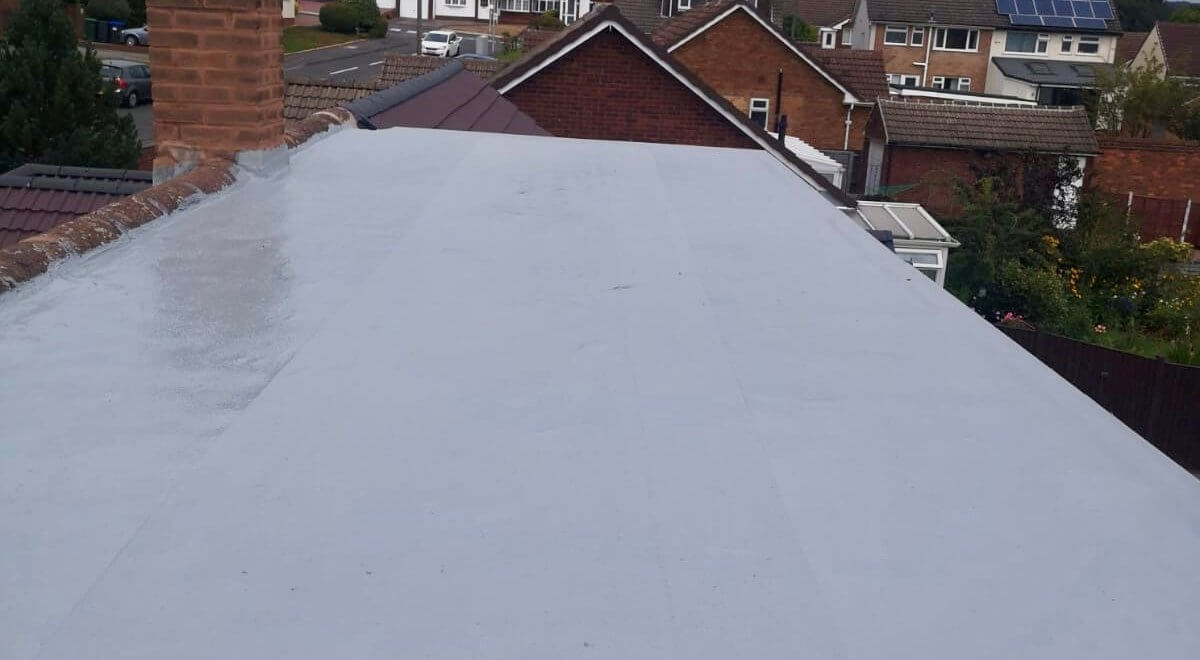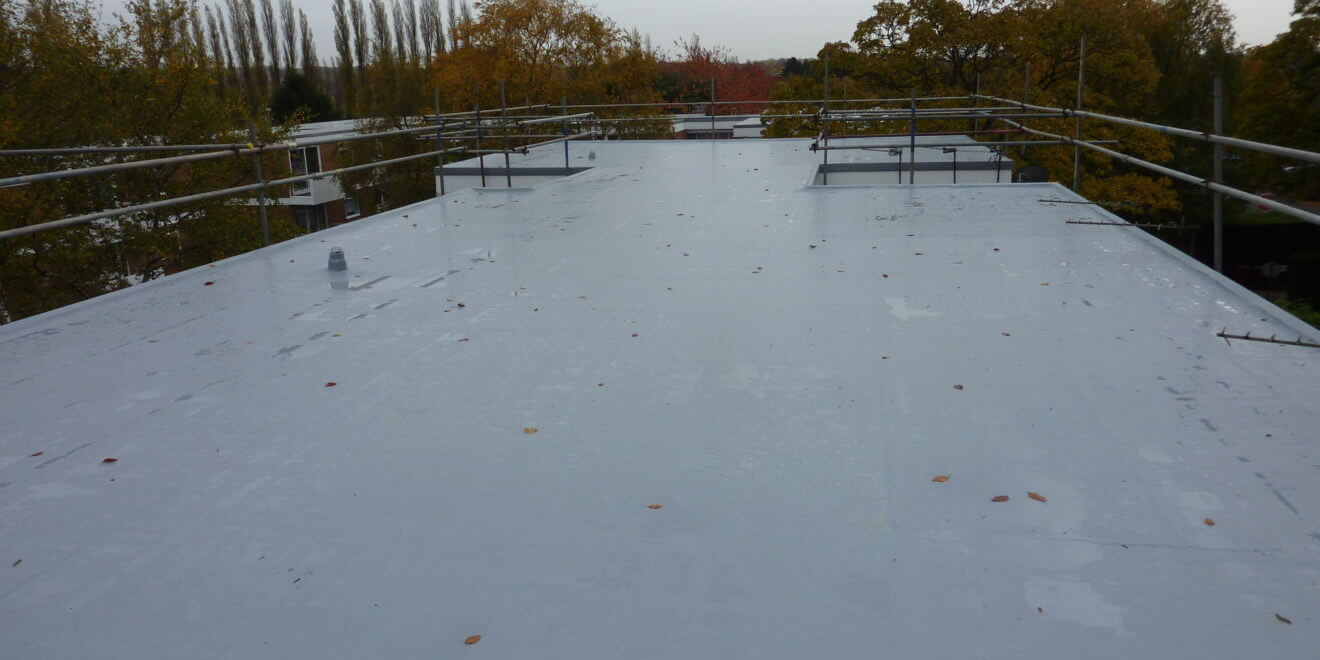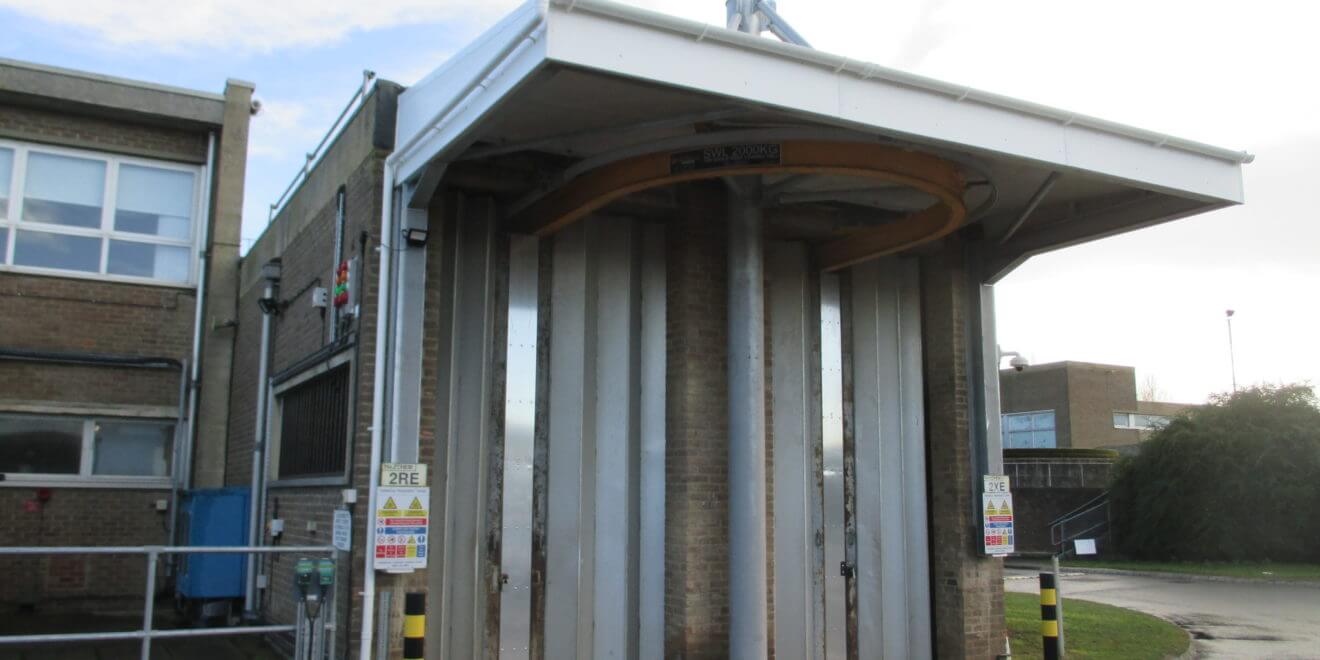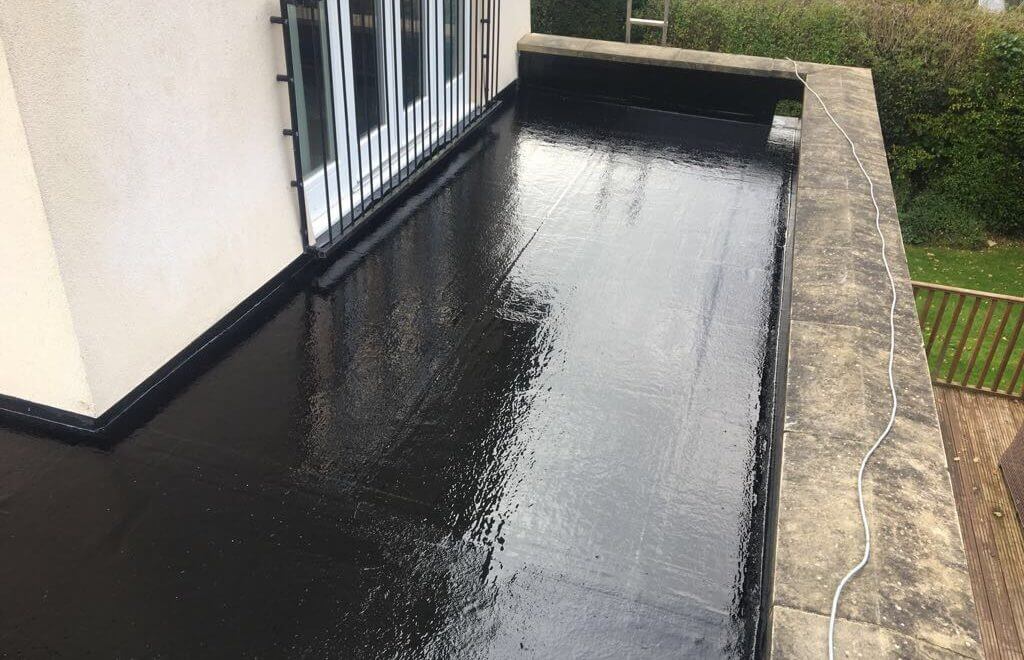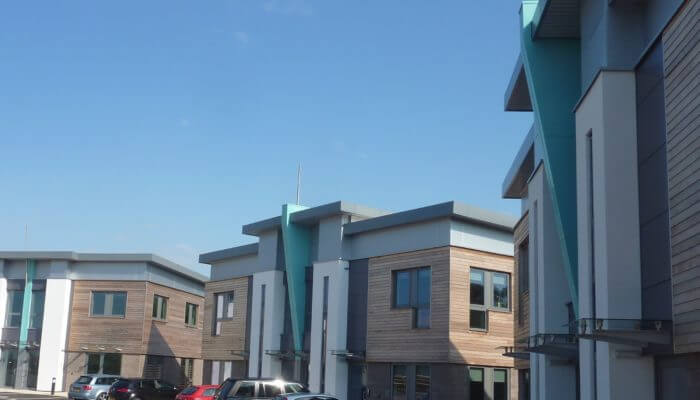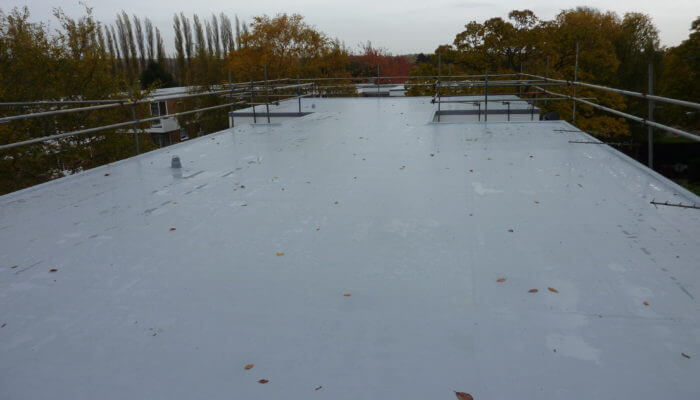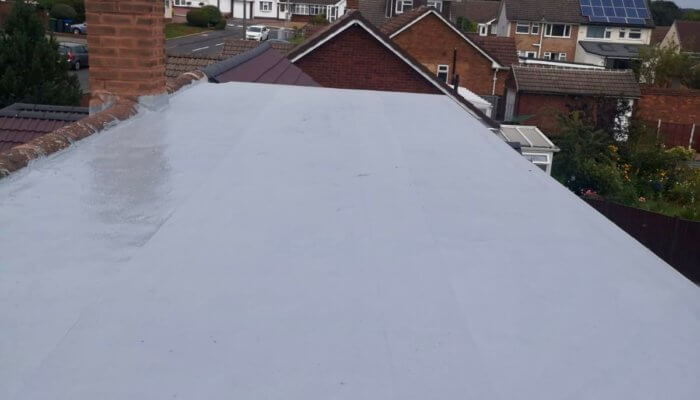When looking to specify a weatherproofing system on your commercial flat roof project to protect it from the elements, there are several different membrane types available. Here we look at two popular choices – a more traditional felt based system, or a more durable fibreglass roof solution. It is worth noting that a fibreglass roof is more commonly known as a glass-reinforced plastic (GRP) roof and for the purposes of this blog we will refer to this type of roof this way.
Each of these has their own benefits and ultimately the system selected will be determined by the specific needs of the project. Installing a glass-reinforced plastic roof, however, generally offers more design freedom, is safer to install, with no requirements for hot works, and is more durable, offering increased longevity. Fibreglass also has increased resistance to fire spread which is an important consideration in any flat roof specification.
Felt covered commercial flat roofs
A traditional felt covered commercial roof uses a bituminous felt membrane which is hot applied using a flame – more commonly referred to as a torch-on application. The weatherproofing membrane is usually made up of three layers of material – one or two layers of bitumen felt – and a finishing layer of mineral felt.
A gas torch is passed over the underside of the bitumen layer, causing it to become an adhesive. A roller is then used to apply pressure to the layer so that it bonds to the roof surface. The felt is applied in sections leaving a seam where the sections meet. The seam is the weak point of the roof’s weatherproofing layer and tends to be where failure may occur first.
For many project types, particularly domestic and smaller commercial roofs, a traditional felt weatherproofing membrane is a popular choice and offers several benefits including:
- Cost – Compared to a GRP roof, a felt weatherproofing membrane is usually cheaper, although in the long term, the increased lifespan of fibreglass can more than make up for this.
- Lifespan – A properly installed felt roof covering can typically be expected to last for eight to ten years.
- Ease of transport – Felt used for roofing is supplied as a roll which is compact and reasonably lightweight, allowing easy transport to site.
- Flexibility – Roofing felt is a very flexible material and can be easily moulded and shaped to fit the roof structure it is being applied to.
Glass-reinforced plastic (GRP) covered commercial flat roofs
Glass-reinforced plastic makes a great choice for use as a weatherproofing layer. The membrane is applied to the roof using a resin adhesive and bonded to the roof surface giving it a strong, protective layer with no seams which tends to be the first point of failure in more traditional weatherproofing membranes, including felt.
To install a GRP weatherproofing membrane, a layer of resin that has been mixed with a catalyst is applied to the roof deck, a sheet of fibreglass mat is then laid onto the resin followed by a finishing layer of resin. This forms a tight, weatherproof seal with high UV light resistance. A glass-reinforced plastic roof also has excellent resistance to fire, making it a safer alternative to traditional felt based systems. Pigment can be added to the final coat of resin meaning the roof can be finished in a colour to match any design requirements.
When considering GRP as the weatherproofing membrane for your roofing project, it can be useful to learn the benefits that this system can provide.
- Safer to install – A glass-reinforced plastic roof is cold applied; therefore, no flame (hot works) is required for installation.
- Longevity – Research shows that a properly maintained roof of this type can last for 30 years or more.
- Maintenance – GRP roofs are easily maintained. Occasionally, leaves and debris should be removed, and the surface given a wash with a mop.
- Visual appeal – The top layer of a GRP roof can be coloured to match any aesthetic requirements.
- Durability – This type of roof has no seams which tend to be the weak points of a traditional felt based covering.
- Fire resistance – Fire safety is of paramount importance in all construction and GRP benefits from increased resistance to fire spread.
- Strength – A glass-reinforced plastic roof offers excellent resistance to the effects of foot traffic and impact from debris including tree branches, hail and dislodged masonry. Additionally, this type of roof is more tolerant to the effects of UV light.
- Seamless finish – The surface of a GRP roof is a continuous layer with no seams or joints, this makes the roof much less susceptible to damage from water ingress and gives a more visually pleasing finish.
Is GRP the most suited weatherproof layer for commercial flat roofs?
Commercial building flat roofs tend to be large areas which, if finished using a traditional felt weatherproof membrane, will have multiple seams or joints where the layers meet, increasing the potential for water ingress and failure. GRP roofs are applied with no seams making them a much more durable solution.
Glass-reinforced plastic can be easily moulded to form complex shapes and the final layer of resin can have pigment added to create a coloured finish.
A traditional felt roof contains bitumen which is flammable whereas GRP has an increased resistance to fire making it a much safer product for use in roof weatherproofing. The installation process for a felt roof requires the use of a flame torch, some projects – notably schools and hospitals – may have restrictions on the use of torch-on systems and a cold-applied finish such as glass-reinforced plastic is usually the preferred solution.
Jones Weatherproofing are a UK company based in the West Midlands, since 1979, they have been providing roof penetrations, weathering and GRP Mouldings solutions. As approved expert installers of cold-applied liquid GRP roofs, Jones Weatherproofing can provide a complete roofing service from initial site surveys through to the design and installation of the roofing system.
To discuss using a GRP roof on your next project or any of our other solutions please get in touch here.
